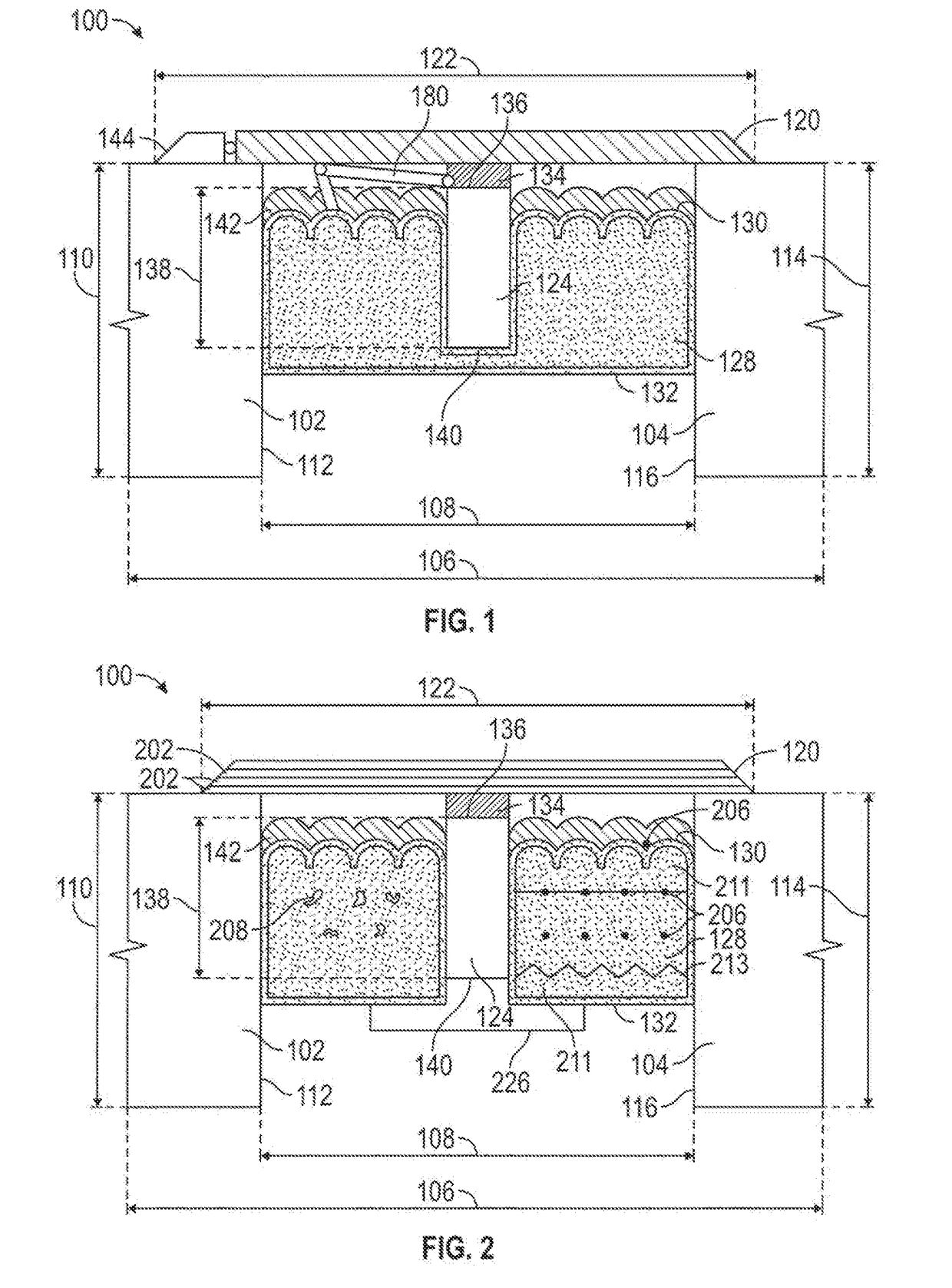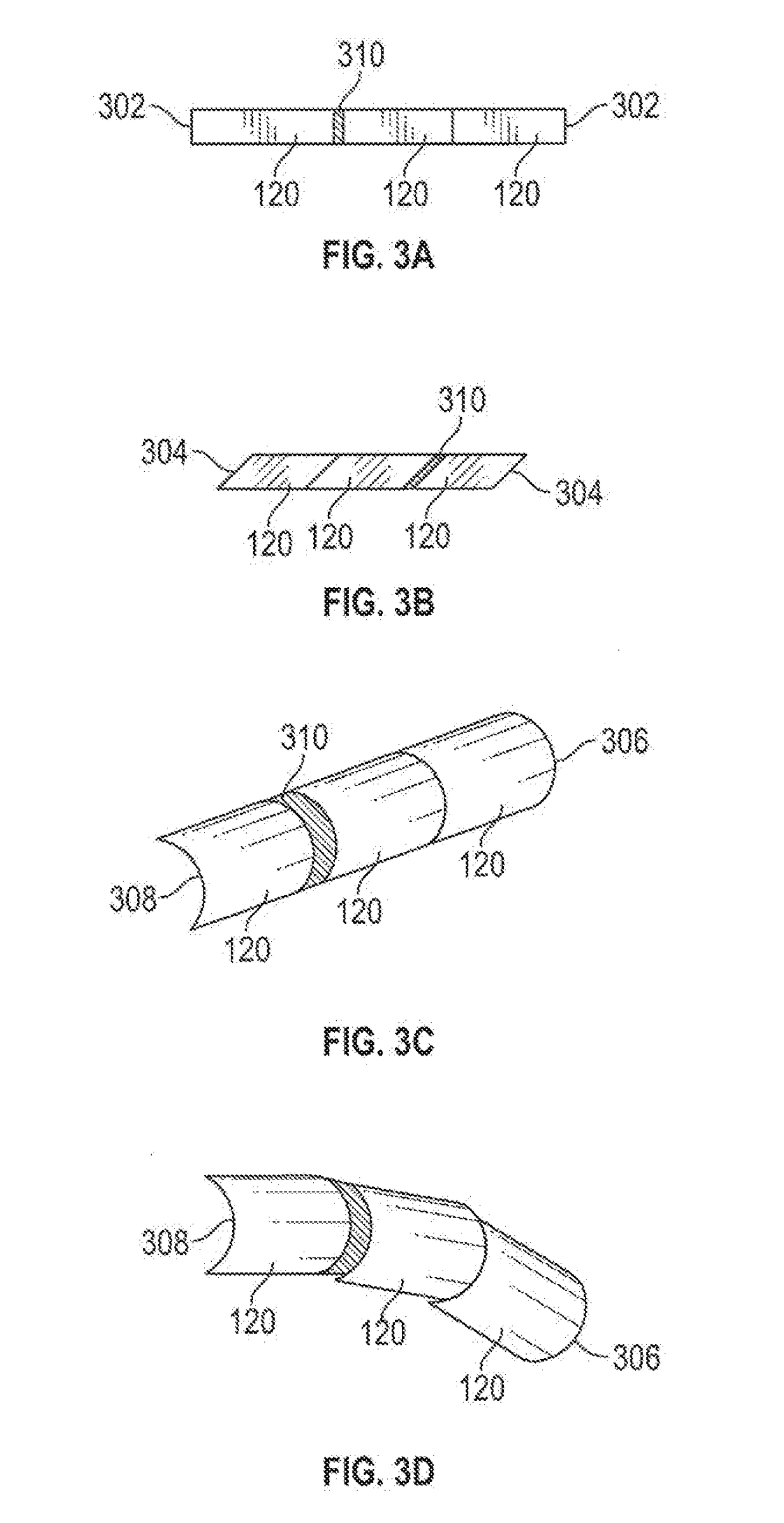Expansion joint seal system with spring centering
a sealing system and expansion joint technology, applied in the direction of roads, buildings, buildings, etc., can solve the problems of joint damage, seal failure, fragile or prone to adhesive failure, and especially difficult to address
- Summary
- Abstract
- Description
- Claims
- Application Information
AI Technical Summary
Benefits of technology
Problems solved by technology
Method used
Image
Examples
Embodiment Construction
[0035]An expansion joint seal system 100 is provided for imposition in a joint, such that a portion remains above the joint, i.e. partial imposition. The joint is formed of a first substrate 102 and a second substrate 104, which are each substantially co-planar with a first plane 106. The joint is formed as the first substrate 102 is separated, or distant, the second substrate 104 by a first distance 108. The first substrate 102 has a first substrate thickness 110, and has a first substrate end face 112 substantially perpendicular to the first plane 106. Likewise, the second substrate 104 has a second substrate thickness 114, and has a second substrate end face 116 substantially perpendicular to the first plane 106.
[0036]By selection of the properties of its various elements, the expansion joint seal system 100 may provide sufficient fire endurance and movement to obtain at least the minimum certification under fire rating standards. The selection of fire retardant components permit...
PUM
| Property | Measurement | Unit |
|---|---|---|
| Temperature | aaaaa | aaaaa |
| Temperature | aaaaa | aaaaa |
| Density | aaaaa | aaaaa |
Abstract
Description
Claims
Application Information
 Login to View More
Login to View More - Generate Ideas
- Intellectual Property
- Life Sciences
- Materials
- Tech Scout
- Unparalleled Data Quality
- Higher Quality Content
- 60% Fewer Hallucinations
Browse by: Latest US Patents, China's latest patents, Technical Efficacy Thesaurus, Application Domain, Technology Topic, Popular Technical Reports.
© 2025 PatSnap. All rights reserved.Legal|Privacy policy|Modern Slavery Act Transparency Statement|Sitemap|About US| Contact US: help@patsnap.com



